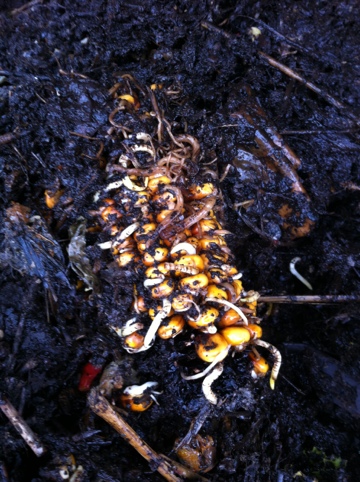I have decided to come clean. I am not an atheist.
People who note the Abrahamic and Gothic mythologies behind my novel might be a little surprised to hear I ever thought I was an atheist. Thing is, they’re my mythologies too. I’m as entitled to use them to tell my difficult tales as the wonky Athenians were when they took up PTSD through the lens of oracles and furies.
But I thought I was an atheist. I evolved (I mean, a priori). I’m embarrassed by human religions, all illogically animist, perniciously tribal and desperately placatory. The bit in Monty Python’s The Meaning of Life, where the school choir sings “Oh Lord, please don’t burn us / Don’t grill or toast your flock”? Nutshell. I’ll give Christ points for trying but he got disillusioned hard — I suspect more by the carnival of Palm Sunday than the crucifixion that followed. Building your church on the guy who thrice denied you to the cops, and calling him your rock? That’s one bitter parable.
But I digress.
I just can’t in good conscience call myself an atheist anymore. It’s not even conscience. I recoil in my gut. It’s not merely how self-satisfied they are, from their eloquently brutal public advocates to the know-it-all kids in so many blog comments. It’s that they think they’re just as cosmically right as theists, and they’re not. There is more to heaven and earth, as Hamlet says. I know it in my bones, and to tell me I am wrong to trust this knowledge is as much a con as what the religious try to sell me.
I’ve been checking out agnosticism, which is slowly developing its muscles (and thanks to the wonderful Aldous, I’m open to any idea that comes from a Huxley). Again, the terms of debate all seem to rest on God’s presence or absence. Why must it be so reductive? Why begin with a God, a monolithic spiritual source — or its absence? Even matter changes rules from the very small to the very big, and “matter” itself seems to be a subset of things-that-are-not-energy. Such fecundity and contradiction in things we can see and touch, yet the immaterial is or isn’t in just one way?
I am declaring my own path, and maybe I’ll find fellow travelers. Here’s the map:
I know there is something beyond the physical. I don’t know if it moves mountains but I believe it moves crowds. I believe one day we will have words for it and a form of evidence-based science to explain it — at least as much as our little primate brains can hold. One day maybe our robots will intercede with it for us, as they do with planets now.
I suspect it is, or is found through, an emergent property of humanity or consciousness, just as consciousness is an emergent property of the systems that regulate the disparate organs of single living things. Or not, or also: maybe a kind of life encompasses our own, as we encompass E. coli; maybe it inspires us to write holy books and seek oracles so we treat each other nicely and don’t poison it.
And, sometimes, inevitably and probably usefully, it gets nasty and horrible in the worst ways, echoing and expanding the damage of our own puny venal selves. As all our burning hydrocarbons make tornadoes and hurricanes, as supernovas kill their own worlds and make new ones.
Something is there. What it is, I don’t know. I am OK with that; I even think it a strength. I can contemplate it without preconceptions. I can break bread with the religious, in its generous spirit, learning the peripheral truths of their myths, without being bound by miserly dogma — and without the burden of contempt.
Something is there. We have only known about dark matter for a couple of decades, and all we know for sure is that without it, the universe doesn’t hold together.
Call this, dark consciousness. I believe in it. I have faith.
